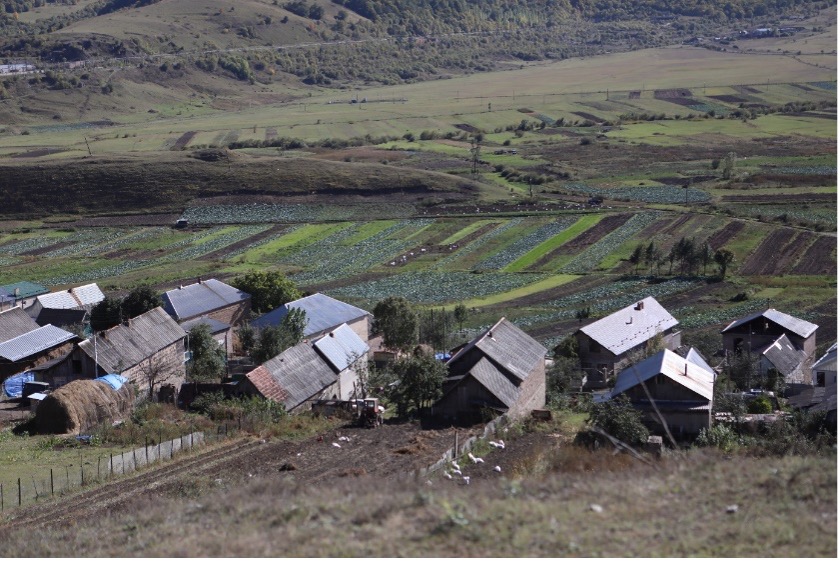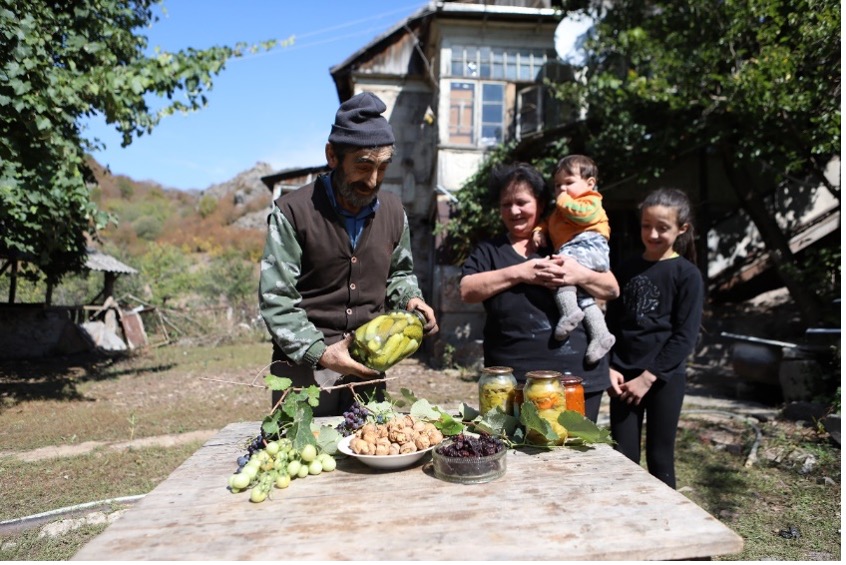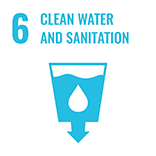Seizing local opportunities

Summary
The project “Strengthening adaptation capacities for communities close to the protected areas of Khosrov Forest State reserve and Dilijan National Park” is ongoing initiation to strengthen the communities’ availability to adapt to climate change in Armenia. The project is financed by the Adaptation Fund and the implementer body is the Environmental Project Implementation Unit of the State Agency of the Ministry of Nature Protection of the Republic of Armenia (EPIU).
In Armenia, due to its climate and pronounced location in the South Caucasus with a mountainous landscape and fragile ecosystems, the compounding effects of climate change and land degradation substantially affect local economies and communities` livelihoods is particularly the case for the communities living next to the Khosrov Forest State Reserve (Ararat Marz, south-western Armenia) and Dilijan National Park (Tavush Marz, north-eastern Armenia). Both protected areas are highly important for species conservation. Several plants and animals on the Red List of Threatened Species of Armenia can be found here, including migratory species.
The communities surrounding these protected areas depend on limited land and pasture resources that are increasingly impacted by climate change. They are facing high rates of poverty with limited capabilities to address land degradation and sustainably manage the natural resources of the region. Community pastures are 3-9 km away from the villages, which are used by cattle breeders. Those pastures are severely degraded as continuous grazing from early spring to late autumn does not allow plants to undergo generative development and restore the area through seeds. There is a high risk that community pastures are transformed into unproductive landscapes thereby depriving rural mountain livelihoods. The lack of alternative income opportunities further weakens the adaptive capacity of their production systems.
Agriculture has traditionally been the backbone of Armenia’s rural economy, but agricultural productivity has decreased in the past five years. Meanwhile, between 2013 and 2020, at the national level, the share of the agricultural sector’s gross domestic product has gradually decreased from 18.4 percent to 11.7 percent. The decrease in harvesting for the rural populations adjacent to Khosrov Forest State Reserve and Dilijan National Park is mainly due to the lack of irrigation water and the efficiency of the deteriorated irrigation systems, where large water losses occur in irrigation channels. This is further aggravated by frequent hails, spring frosts, high summer temperatures, and hot winds in both areas.
The main objectives of this project are:
– to strengthen the community’s climate adaptability and sustain the protected areas through promoting climate-smart agricultural practices in degraded areas
– to ensure gender equality and accessibility for vulnerable communities to the climate-smart technologies to add value chainsfor climate-smart agriculture
– to increase awareness, planning, monitoring, and decision-making capacity on climate-smart agriculture production methods and land degradation neutrality in target communities
Overview
- Location:
- Implementation sites:
- Single country
- Single location
- Mountain region:
- Ararat März (region), Tavush März (region)
- Site locations:
Armenia
- Solution scale:
- Ecosystem type(s):
- Solution type(s):
- Sector(s):
- Climate impact(s) addressed:
- Impact time-scales:
- Implementation timeline:
- 2019 - 2023
Solution details
Main beneficiaries & outcomes
The main beneficiaries are the locals in the selected areas. In Ararat Marz, a total of 4,525 inhabitants have been targeted in about 1,000 households across three rural settlements. The communities’ administrative administrative areas are about 9,400 hectares, which includes pastureland (82,2 percent), arable land (8,1 percent), remote pastures (5,9 percent), and land plots (1,7 percent), perennial herbs (1,3 percent), and gardens (0,4 percent). The total number of cattle in 2017 was 7,149.
In Tavush Marz, the number of inhabitants targeted by the project was 11,643 in 2016, across about 3,700 households. The communities’ administrative area includes pastureland (68,8 percent), hay meadows (18,3 percent), arable land (7,4 percent), and land plots (5,5 percent). There were about 8,653 heads of livestock in 2016.
Through the holistic approach taken to support family farms and rural communities in the two areas, food and nutritional security could be improved along with increasing efficient management of water resources for the benefit of the community. The promotion of orchards, greenhouses, and solar dryers in combination with training on the marketing of the products on local and national markets has further provided new income opportunities, particularly for women-headed households.

Karlen and Anush Baghdasaryan from the Aghavnavanq village next to Dilijan National Park. @Sustainable Caucasus
“Metaphorically speaking, this project seemed to help the villagers get their hands back. It is a big privilege to work on one’s own land and enjoy the results achieved. These canned vegetables are made of vegetable crops provided by the project. More such projects are needed to reach the state of self-confidence and self-sufficiency of villagers.” Mr. Baghdasaryan
“Our family is among those selected to receive a fruit solar dryer. We rely very much on this chance to start a small business and even to create a few job opportunities for others. As informed, the dryer is supposed to be an 18 square meter dry fruit-producing unit, which should be big enough to establish a family business with a few employees.” Ms. Baghdasaryan
Planning and implementation
An inclusive approach has been chosen to strengthen adaptation capacities for communities close to the protected areas of Khosrov Forest State reserve and Dilijan National Park within an internationally funded project, targeting both livelihoods and adjacent ecosystems.
As lack of water has been a major concern in the areas close to the Khosrov Forest State Reserve and Dilijan National Park, water-use efficiency has been improved by renovating the main irrigation supply systems where large water losses occurred. The water saved can now be used to expand irrigated land which increases crop yield and thus income for the rural population. In addition, drip irrigation has been established in the communities for planting orchards and preventing further soil degradation. Mulching and the adoption of more heat- and drought-resistant pasture crops were also promoted to reduce water use.
For reducing pressure on community pastures, climate-smart livestock management has been introduced including rotational grazing and construction of livestock watering points as well as indigenous reseeding for restoring degraded land.
Livelihoods are also being strengthened by diversifying agriculture and decreasing energy needs and costs. New technologies that have been introduced include lightweight greenhouses and solar dryers. Non-heated greenhouses extend the growing season and reduce water demand, allowing villagers to grow non-traditional and non-native crops that are in high demand in the market. Solar dryers for fruits, berries, vegetables, and herbs reduce raw material loss and improve the quality of the final products. Overall, these new technologies improve farm productivity and increase income. To empower marginalized groups, women and youth have especially benefited from these technologies.
Finance
The project is financed by a grant from the Adaptation Fund for a three-year implementation plan from 2019 to 2022. Due to the delay from the COVID-19 pandemic, the project has already been extended to 2023.
Innovation
As water scarcity is the main problem for the selected communities, the solution applied an innovative approach to reduce the demand on the water supply by promoting non-heated greenhouses and solar dryers that require less water for irrigation and allow local communities to practice non-traditional and non-native crops growing that are in high demand in the market. Solar dryers for fruit, berries, vegetables, and herbs reduce raw material loss and improve the quality of the final products. Overall, these new technologies improve farm productivity and increase income. To empower marginalized groups, women and youth have especially benefited from these technologies.
Performance evaluation
The project is under implementation.
Long term project sustainability and maintenance
The project team conducted the workshop with the project’s stakeholders to discuss the implemented activities long term maintenance and sustainability. At the meeting, agreement document was signed between the government and targeted communities as a step to preserve the project’s results in the future.
The project’s sustainability will be utilized through the elaboration of the project’s management plan including its business annex with the targeted communities four year development plans. This action opens window for opportunities to plan further activities based on project outcomes that will support the activities flow beyond the project life-cycle as well as its long-term sustainability.
Capacities for design and implementation
Institutional
In the case of this solution, a formal agreement between the Ministry of Environment and each community was signed, declaring their commitment to implementation, as well as mutual liabilities and reporting requirements. The open-access agreement and protocols aim to ensure public accountability, transparency, and the sustainability of implemented changes. The project supported the cooperation between the communities and organizations charge in the protected areas management.
Moreover, the project created the grievance resolution mechanism that obligates the Project Management Unit (PMU) to receive the concerns, complaints, and grievances from the residents of the project’s targeted areas and address them in coordination with relevant stakeholders depending on the nature of the complaints.
Socio-cultural
The solution represented in this portal is a major component of the project that also has an awareness-raising and capacity-building component including the NGO sector’s active engagement during the activities implementation.
Outlook & Scalability
Barriers and adverse effects
Possible risks were identified during the stakeholders’ meeting and the relevant solutions were formulated to mitigate the barriers and adverse effects during the project implementation. For example, the land use disputes within the communities were recorded as a risk and it was solved through the consultation process with the direct beneficiaries where the importance of the project activities was explained.
Potential for upscaling and replication
This type of solution is relatively easy to scale up and implement in other communities in the vicinity of a protected area. The measures to diversify income sources benefit biodiversity conservation by reducing land use pressure on the protected areas (such as uncontrolled grazing and wood collection). The combined approach of developing climate-smart pasture management, establishing agricultural value chains, introducing energy-saving technologies, and increasing water use efficiency will help to sustain rural livelihoods while restoring degraded land.
To gain the trust of community members, a key enabling factor to support the solution’s success is an early-on dialogue with the villagers, explaining the approach and ensuring interventions are targeted to local circumstances and needs. Another important element to facilitate long-term change is the training of community champions, regular exchanges of best practices between communities, farmer field schools, and more traditional lecturer–listener models of knowledge transfer.
Finally
Acknowledgments
In-depth information was provided by the Project Implementation and Monitoring Department Environmental Project Implementation Unit Ministry of Nature Protection of the Republic of Armenia.
Special thanks to Mr. Ashot Sargsyan who contributed to the information collection for this solution.





(0) Comments
There is no content